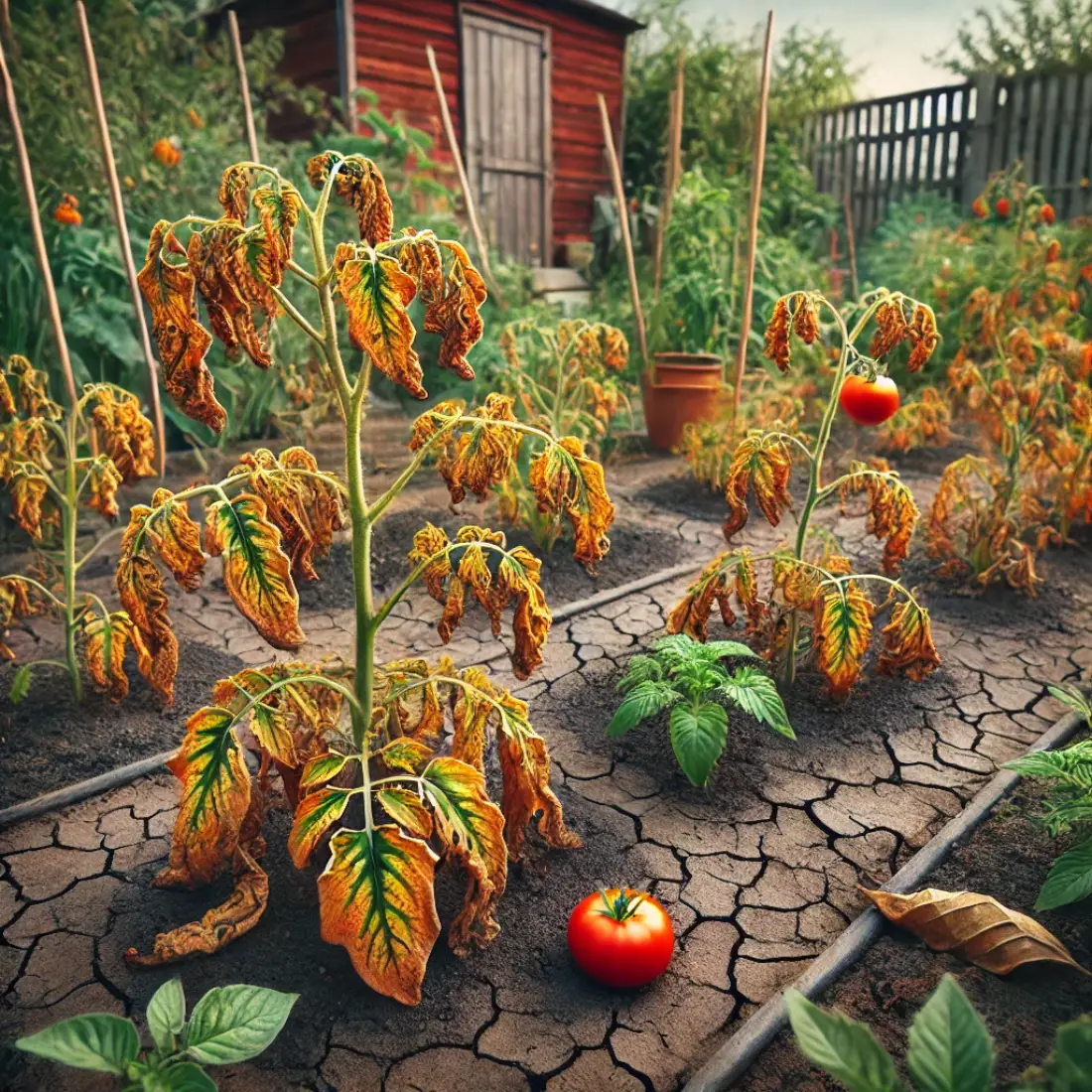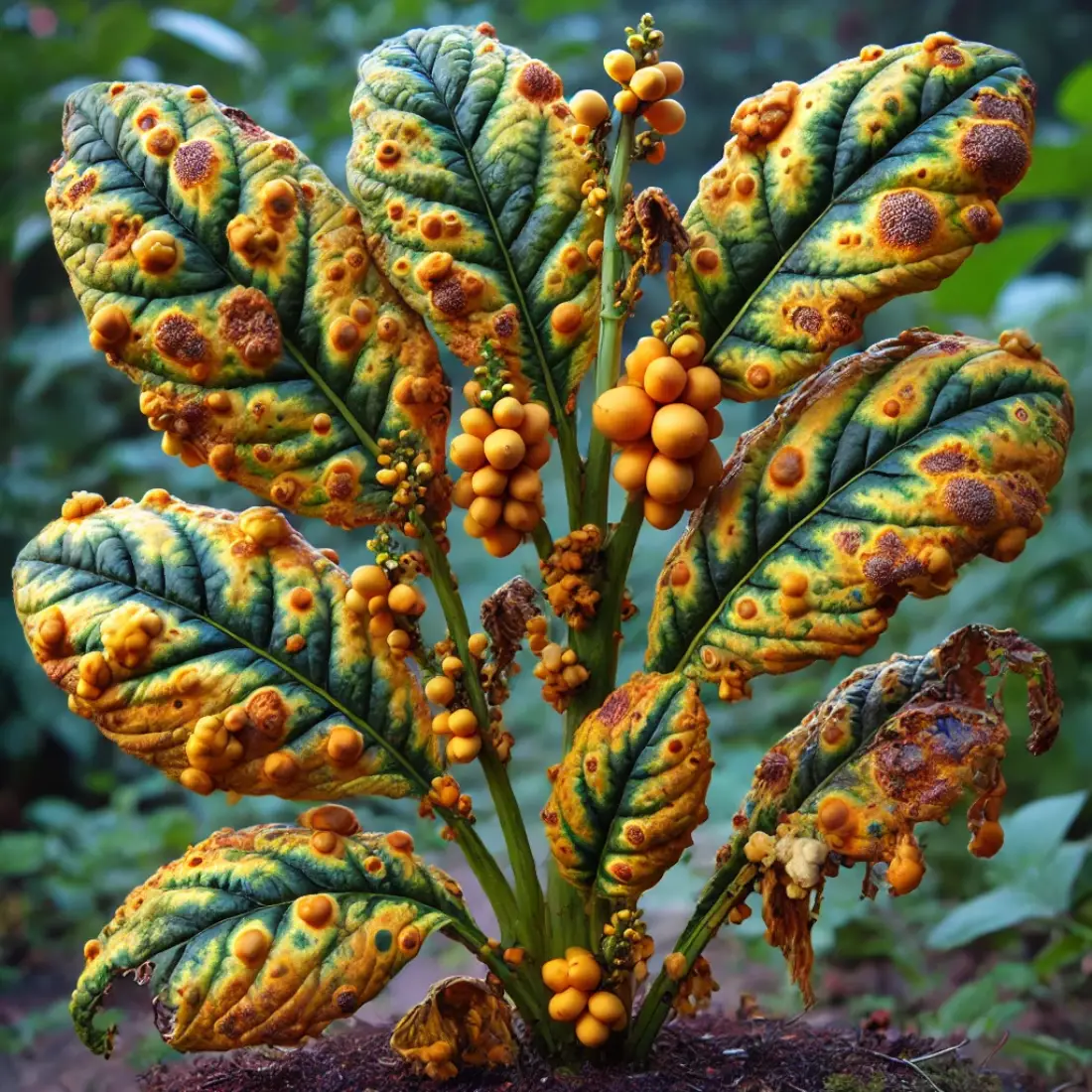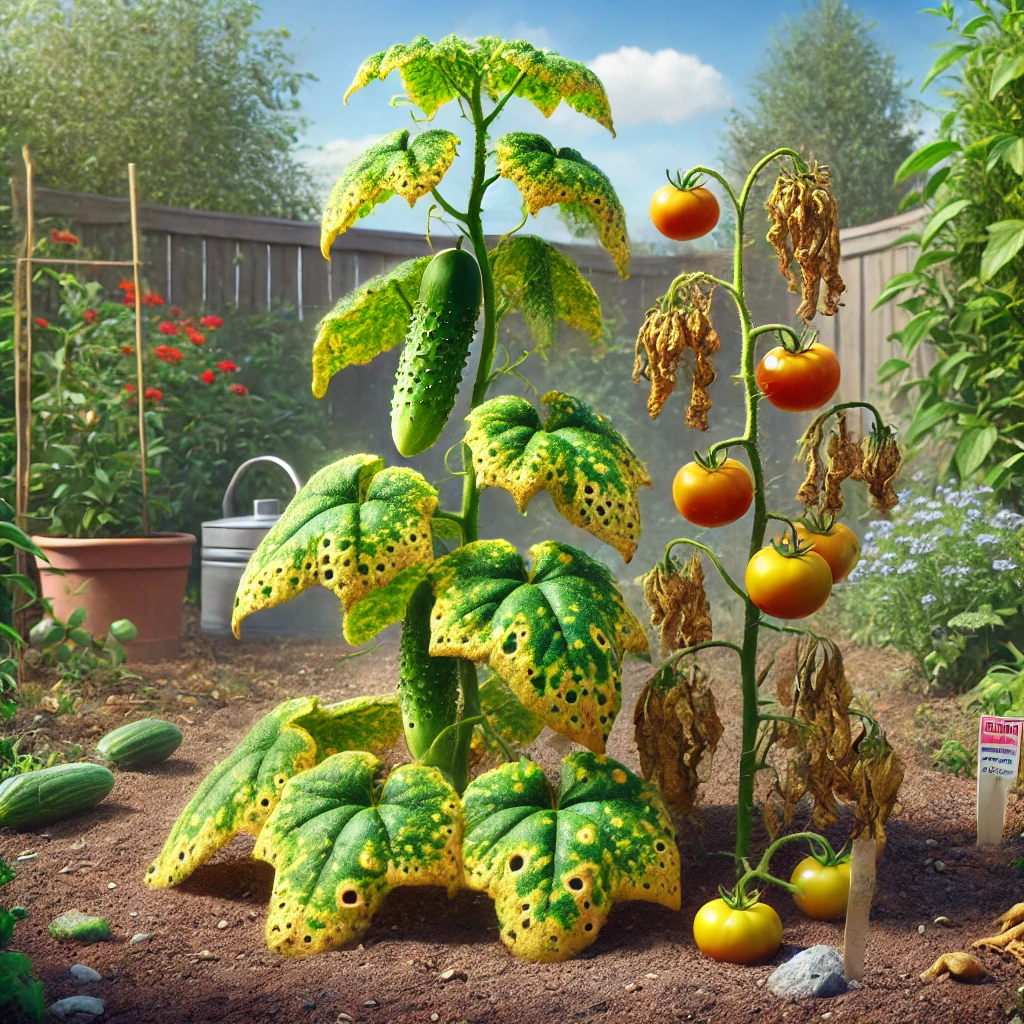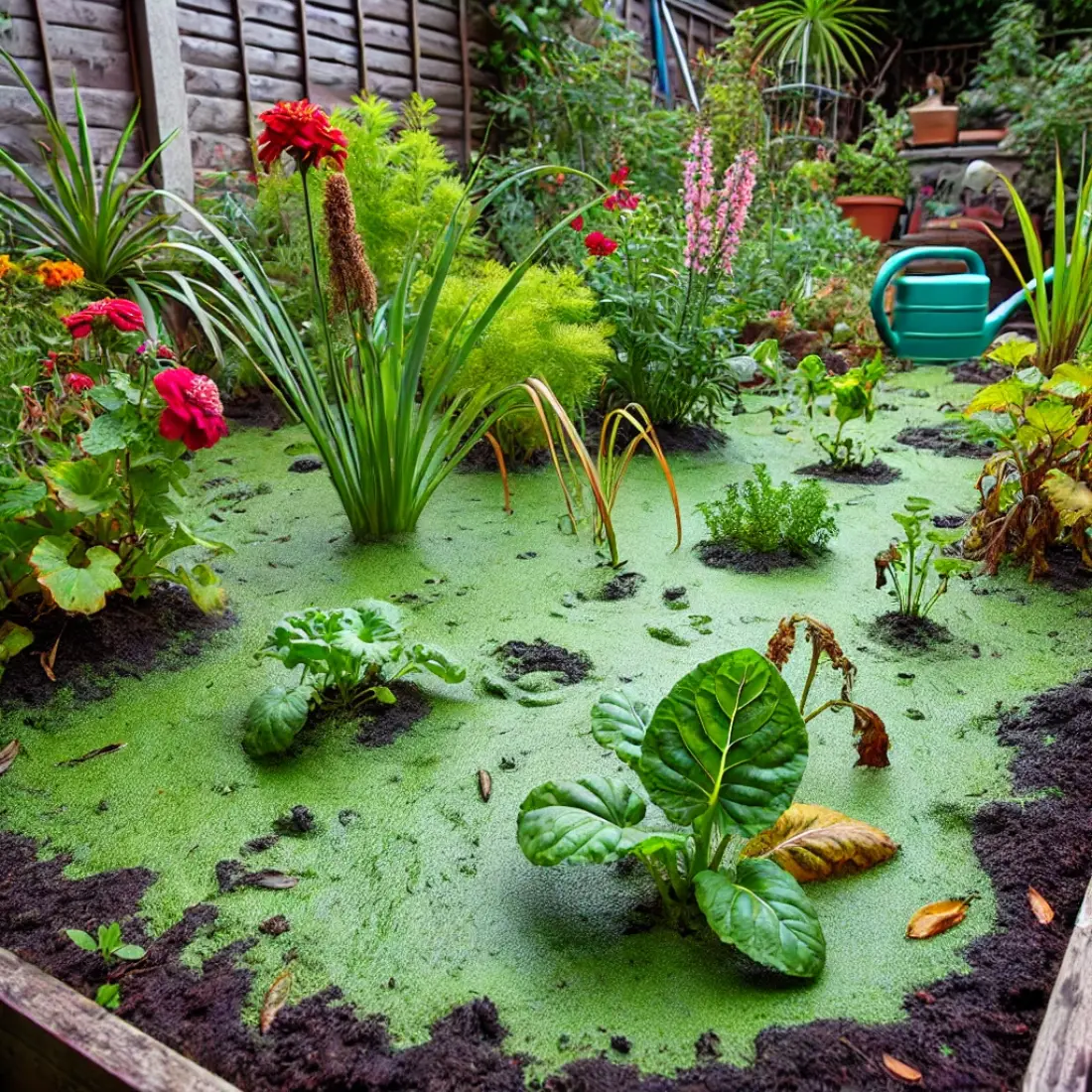Verticillium wilt is a destructive plant disease caused by soil-borne fungi that infects a wide range of crops, leading to significant agricultural losses. This disease poses a serious threat to farmers and gardeners alike, as it can quickly spread and devastate entire fields.
However, controlling Verticillium wilt organically is not only possible but also beneficial for maintaining healthy ecosystems and sustainable farming practices.
- Understanding Verticillium Wilt: A fungal disease causing wilting and yellowing of plants, leading to reduced yields.
- Symptoms Identification: Look for wilting, yellowing or browning leaves, and stunted growth to differentiate from other diseases.
- Organic Soil Management: Use compost and natural fertilizers to maintain healthy soil and enhance plant resistance.
- Resistant Varieties: Plant crops known for their resistance to Verticillium wilt.
- Biological Controls: Introduce beneficial fungi and bacteria like mycorrhizal fungi to naturally combat the disease.
- Organic Fungicides: Use effective organic fungicides as part of an integrated pest management strategy.
- Cultural Practices: Implement proper watering, pruning, and plant spacing to reduce disease spread.
- Mulching and Composting: Improve soil health with organic mulch and compost.
- Integrated Pest Management (IPM): Combine biological controls, resistant varieties, and cultural practices for a comprehensive approach.
- Prevention Strategies: Regular soil testing, crop rotation, and overall plant health maintenance to prevent infection.
What is Verticillium Wilt?
Verticillium wilt is a plant disease caused by soil-borne fungi, primarily Verticillium dahliae and Verticillium albo-atrum. This disease affects a wide variety of plants, including vegetables, trees, shrubs, and ornamental plants. The fungi invade the plant’s vascular system, disrupting the flow of water and nutrients, leading to wilting and often death of the plant.

Key Characteristics:
- Wilting: The most noticeable symptom, where leaves and stems lose rigidity and droop.
- Yellowing and Browning: Leaves may turn yellow or brown, often starting with older leaves.
- Stunted Growth: Infected plants often exhibit reduced growth rates and smaller leaves.
- Vascular Discoloration: When the stem is cut open, brown or black streaks can often be seen in the vascular tissue.
Impact:
- Crop Losses: Significant yield reduction in affected crops.
- Wide Host Range: Can infect over 300 plant species, including economically important crops like tomatoes, potatoes, and strawberries.
Spread and Survival:
- Soil-Borne: The fungi persist in the soil for many years, even without host plants.
- Water and Wind: Spread through water movement in the soil and by wind-blown soil particles.
Affected Plants
Verticillium wilt affects a wide range of plants, including vegetables, fruits, trees, shrubs, and ornamentals. Here is a list of some commonly affected plants:
Vegetables:
- Tomatoes: One of the most susceptible crops, often showing significant wilting and yellowing.
- Potatoes: Infected plants may exhibit wilted leaves and tuber discoloration.
- Eggplants: Wilting, stunted growth, and leaf discoloration are common symptoms.
- Peppers: Susceptible to infection, leading to wilting and reduced yields.
Fruits:
- Strawberries: Infected plants may show stunted growth, wilting, and yellowing of leaves.
- Cucurbits (Cucumbers, Melons, Squash): Symptoms include wilting, yellowing, and reduced fruit quality.
- Raspberries: Can experience wilting, reduced vigor, and yellowing leaves.
Trees:
- Maples: Often show branch dieback, wilting, and leaf discoloration.
- Olives: Affected trees may exhibit reduced growth, wilting, and branch dieback.
- Stone fruits (Cherries, Plums, Peaches): Wilting, leaf drop, and branch dieback are common symptoms.
Shrubs:
- Roses: Infected bushes may show wilting, yellowing leaves, and reduced flowering.
- Lilacs: Symptoms include wilting, leaf yellowing, and dieback.
Ornamentals:
- Asters: Wilting, yellowing, and stunted growth are typical signs.
- Hollyhocks: Affected plants may exhibit wilting, leaf discoloration, and reduced blooms.
DIY Organic Fungicide Effective for Verticillium Wilt
Creating your own organic fungicide at home can be an effective and affordable way to manage Verticillium wilt. Below are a few DIY organic fungicide recipes that utilize natural ingredients to combat the disease.
Neem Oil Spray
Ingredients:
- 2 tablespoons of neem oil
- 1 tablespoon of mild liquid soap
- 1 gallon of water
Instructions:
- Mix the neem oil and liquid soap in a gallon of water.
- Pour the mixture into a spray bottle.
- Shake well before each use to ensure the oil is evenly distributed.
- Spray the solution on the affected plants, making sure to cover all surfaces, including the undersides of leaves.
- Reapply every 7-14 days, or after rain.
Benefits: Neem oil disrupts the fungal cell membranes and is effective against a broad spectrum of fungal diseases, including Verticillium wilt.
Baking Soda Solution
Ingredients:
- 1 tablespoon of baking soda
- 1 teaspoon of mild liquid soap
- 1 gallon of water
Instructions:
- Dissolve the baking soda and liquid soap in a gallon of water.
- Pour the mixture into a spray bottle.
- Shake well before each use.
- Spray the affected plants thoroughly, focusing on areas showing symptoms of Verticillium wilt.
- Reapply every 7-10 days, or after rain.
Benefits: Baking soda changes the pH on the plant surfaces, creating an inhospitable environment for fungi.
Garlic Oil Spray
Ingredients:
- 10 cloves of garlic
- 2 tablespoons of mineral oil
- 1 teaspoon of mild liquid soap
- 1 quart of water
Instructions:
- Crush the garlic cloves and soak them in mineral oil for 24 hours.
- Strain the garlic out and mix the oil with water and liquid soap.
- Pour the mixture into a spray bottle.
- Shake well before each use.
- Spray the affected plants, ensuring good coverage.
- Reapply every 7-14 days, or after rain.
Benefits: Garlic contains sulfur compounds that have antifungal properties, making it effective against Verticillium wilt.
Compost Tea
Ingredients:
- 1 part well-aged compost
- 5 parts water
Instructions:
- Combine the compost and water in a container.
- Let the mixture steep for 3-5 days, stirring occasionally.
- Strain the liquid and pour it into a spray bottle.
- Spray the tea on the soil around the plants and directly onto the foliage.
- Reapply every 2-3 weeks.
Benefits: Compost tea introduces beneficial microorganisms that help suppress the Verticillium fungus and improve soil health.
Application Tips:
- Apply these sprays early in the morning or late in the evening to avoid leaf burn.
- Consistent application is key for effectiveness.
- Monitor the plants regularly and adjust the treatment as needed.
Prevention Strategies Against Verticillium Wilt
Preventing Verticillium wilt involves a combination of practices aimed at maintaining healthy soil, selecting resistant plant varieties, and implementing good gardening habits. Here are effective strategies to keep this destructive disease at bay:
Crop Rotation
- Rotate crops annually to prevent the buildup of Verticillium fungi in the soil. Avoid planting susceptible plants in the same location year after year. For instance, follow tomatoes with corn or beans, which are less susceptible.
Resistant Varieties
- Choose plant varieties that are resistant or tolerant to Verticillium wilt. Many seed companies offer resistant strains of common crops like tomatoes, peppers, and strawberries. This significantly reduces the likelihood of infection.
Soil Health
- Maintain healthy, well-drained soil. Improve soil structure and fertility by adding organic matter such as compost or aged manure. Healthy soil supports robust plant growth and resilience against diseases.
Proper Watering Practices
- Water plants deeply but infrequently to encourage strong root systems. Avoid overhead watering, as it can create conditions favorable for fungal growth. Drip irrigation or soaker hoses are preferred methods to minimize moisture on foliage.
Mulching
- Apply a layer of organic mulch around plants to conserve moisture, regulate soil temperature, and prevent soil-borne pathogens from splashing onto plants. Mulch also helps suppress weed growth, which can harbor pests and diseases.
Sanitation
- Practice good garden hygiene by removing and destroying infected plant debris. Sterilize gardening tools regularly to prevent the spread of the fungus. Avoid using contaminated soil or compost.
Soil Solarization
- Use soil solarization to reduce fungal populations in the soil. Cover moist soil with clear plastic sheeting during the hottest part of the year for 4-6 weeks. The heat will kill many soil-borne pathogens, including Verticillium.
Regular Monitoring
- Inspect plants regularly for early signs of Verticillium wilt, such as yellowing or wilting leaves. Early detection allows for prompt removal of infected plants to prevent the disease from spreading.
Beneficial Microorganisms
- Introduce beneficial microorganisms, such as mycorrhizal fungi and beneficial bacteria, to the soil. These organisms compete with pathogenic fungi and enhance plant health and disease resistance.
Avoid Over-fertilization
- Avoid excessive use of nitrogen-rich fertilizers, as lush, tender growth can be more susceptible to infections. Use balanced, organic fertilizers to promote steady, healthy growth.
FAQs about Verticillium wilt
What is Verticillium wilt?
Verticillium wilt is a fungal disease caused by soil-borne fungi, primarily Verticillium dahliae and Verticillium albo-atrum. It affects a wide range of plants by invading their vascular systems, leading to wilting, yellowing, and often death.
How can I tell if my plant has Verticillium wilt?
Symptoms include wilting, yellowing or browning of leaves, stunted growth, and vascular discoloration (brown or black streaks inside the stem). These symptoms often start on one side of the plant and progress over time.
Can Verticillium wilt spread to other plants?
Yes, Verticillium wilt can spread through contaminated soil, water, and tools. It affects a wide range of plants, including vegetables, fruits, trees, shrubs, and ornamentals.
What are the best organic methods to control Verticillium wilt?
Effective organic methods include crop rotation, planting resistant varieties, maintaining healthy soil with organic matter, using organic fungicides like neem oil or compost tea, and practicing good garden hygiene.
How often should I apply organic fungicides?
The frequency of application depends on the specific fungicide used. Neem oil and baking soda solutions are typically applied every 7-14 days, while garlic oil spray can be reapplied every 7-14 days as well. Always follow the specific instructions for each fungicide.
Are there any plants resistant to Verticillium wilt?
Yes, some plants are resistant or tolerant to Verticillium wilt. Resistant varieties of tomatoes, peppers, and strawberries are available. Always check with seed suppliers for resistant varieties suitable for your region.
What is soil solarization, and how does it help?
Soil solarization involves covering moist soil with clear plastic sheeting during the hottest part of the year for 4-6 weeks. The heat generated under the plastic kills many soil-borne pathogens, including Verticillium fungi.
Can composting help prevent Verticillium wilt?
Yes, composting improves soil health by adding beneficial microorganisms and organic matter. This enhances plant resistance to diseases, including Verticillium wilt. Using compost tea as a foliar spray or soil drench can also be beneficial.
How can I improve soil health to prevent Verticillium wilt?
Improve soil health by adding organic matter like compost, using cover crops, practicing crop rotation, and avoiding soil compaction. Healthy soil supports robust plant growth and resilience against diseases.
What should I do with infected plants?
Remove and destroy infected plants immediately to prevent the spread of Verticillium wilt. Do not compost infected plant material, as the fungus can survive and spread through compost.











